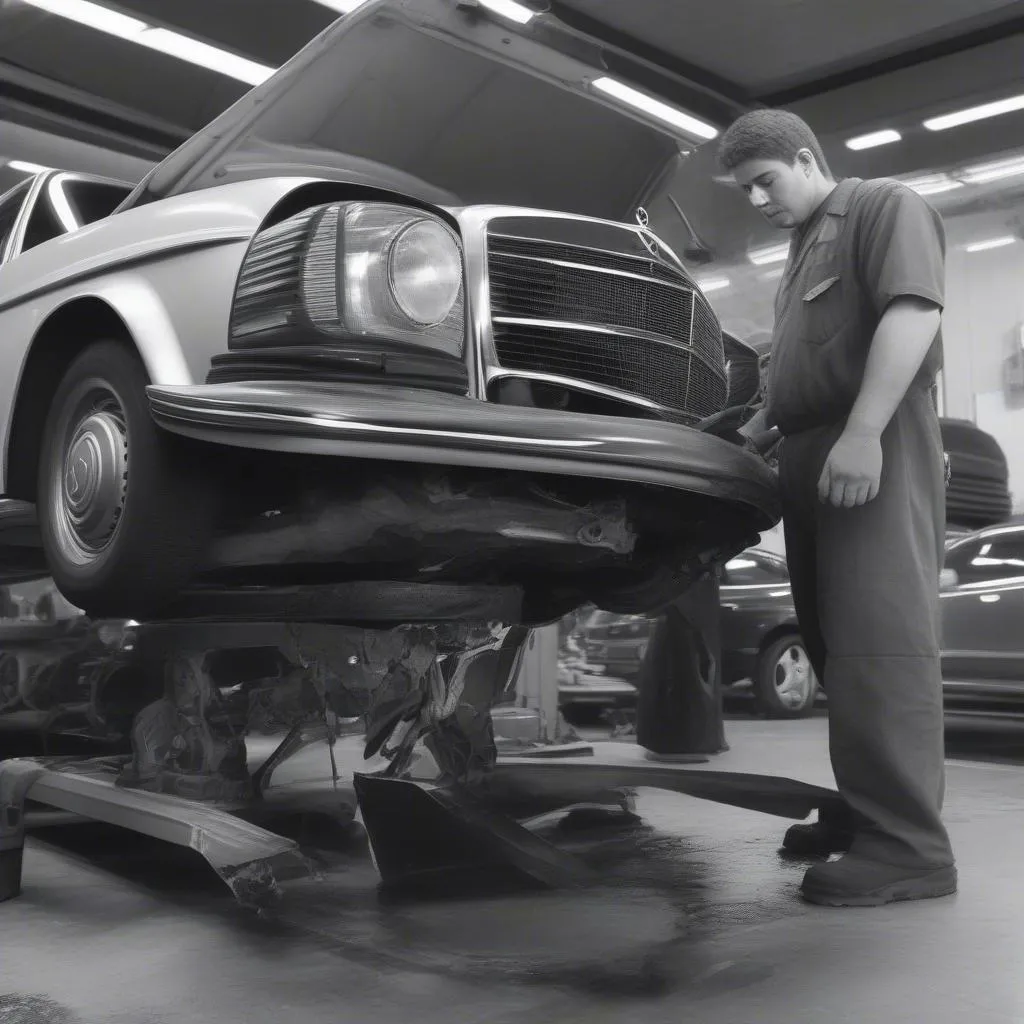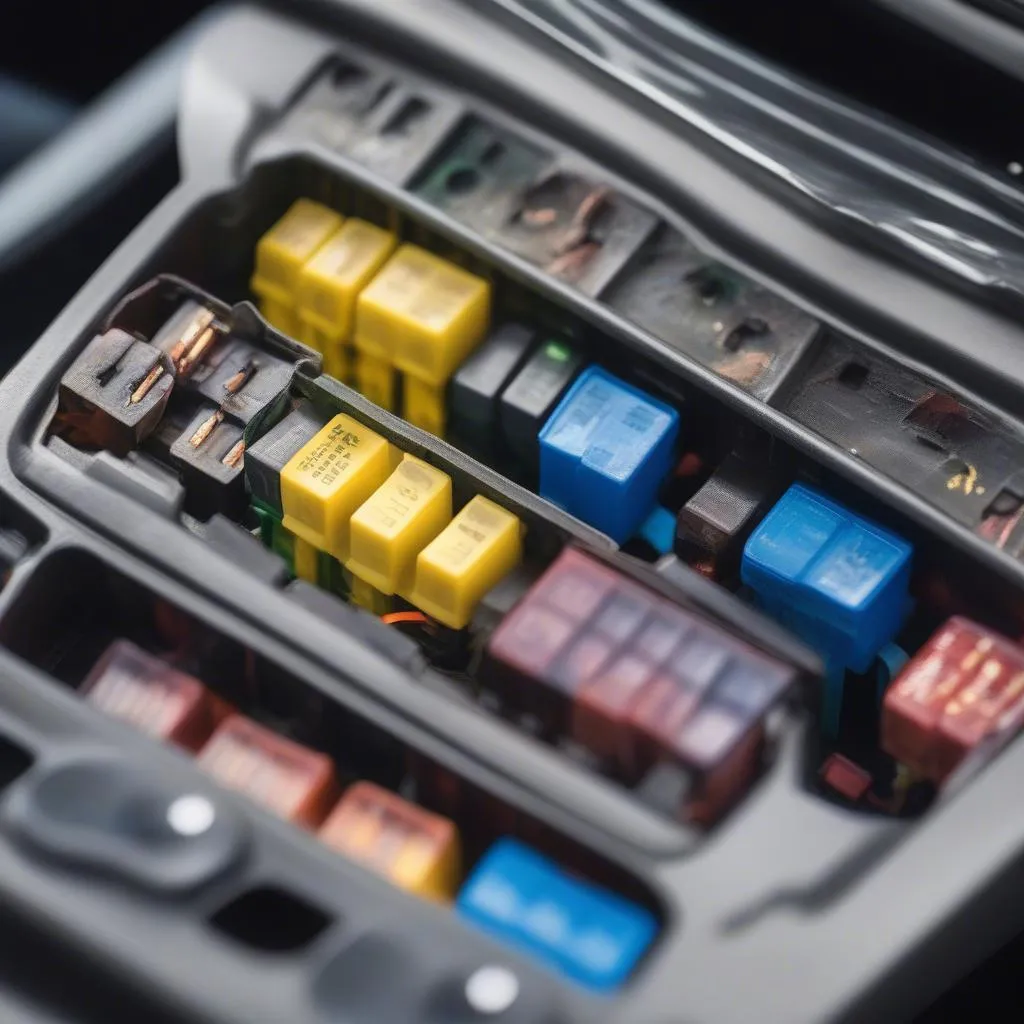Experiencing problems with your Mercedes’ “Arcadia” system after a collision? You’re not alone. This issue is a common occurrence, often stemming from sensor malfunctions or software glitches triggered by the impact. Thankfully, diagnosing and fixing the issue might be simpler than you think. This comprehensive guide will walk you through the potential causes, symptoms, and solutions to get your Mercedes back in top shape.
Understanding the Mercedes Arcadia System and Collision-Related Issues
While “Arcadia” itself isn’t a recognized term in the Mercedes-Benz ecosystem, it’s possible this refers to a specific infotainment or navigation system feature, or perhaps even a regional colloquialism. For the purpose of this guide, we’ll assume “Arcadia” relates to a system affected post-collision.
Collisions, even minor ones, can jolt sensitive electronic components in your Mercedes. These components, often related to safety and driver assistance systems, might malfunction or send erroneous data, leading to unexpected behavior in your vehicle.
Identifying the Problem: Common Symptoms
If your Mercedes has been in a collision and you’re experiencing issues, it’s crucial to identify the specific symptoms to pinpoint the root cause. These can include:
- Warning lights on the dashboard: Check for illuminated warning lights related to airbags, ABS, ESP, or other safety systems.
- Malfunctioning infotainment system: Issues with the navigation, Bluetooth connectivity, or audio could indicate a problem.
- Erratic sensor behavior: This might manifest as parking sensors constantly beeping, blind spot monitoring system issuing false alerts, or adaptive cruise control malfunctioning.
- Communication errors with diagnostic tools: Difficulty connecting to or retrieving data from the vehicle’s computer system can suggest wiring harness damage.
Gathering Your Tools for the Fix
Before diving into the repair process, it’s essential to have the right tools at your disposal:
- OBD-II scanner: This tool will allow you to read and interpret diagnostic trouble codes (DTCs) stored in your Mercedes’ computer system, providing valuable insights into the issue.
- Repair manuals: Access to reliable repair manuals specific to your Mercedes model will provide detailed wiring diagrams, component locations, and repair procedures.
- Basic tools: Having a set of screwdrivers, wrenches, and pliers handy will be necessary for accessing and replacing certain components.
Troubleshooting and Repair Steps
- Scan for Diagnostic Trouble Codes: Begin by connecting your OBD-II scanner to your Mercedes’ diagnostic port, usually located under the dashboard on the driver’s side. Read and record any stored DTCs, as these codes provide crucial clues about the system malfunction.
- Research the Codes: Consult your repair manuals or a reliable online database to understand the meaning of the retrieved DTCs. This information will guide you toward the specific area or component requiring attention.
- Inspect for Visible Damage: Carefully examine the area surrounding the suspected faulty component for any visible damage, such as loose connections, damaged wires, or broken sensor brackets.
- Test and Replace Faulty Components: Following the guidance in your repair manuals, use a multimeter or other appropriate tools to test the functionality of suspected components. Replace any parts that are confirmed to be defective.
- Clear Diagnostic Codes and Retest: After completing the repairs, use your OBD-II scanner to clear the stored DTCs. Then, test drive your Mercedes to ensure the issue has been resolved.
 Mercedes Collision Repair
Mercedes Collision Repair
Frequently Asked Questions
Q: Can a minor collision truly affect my Mercedes’ electronics?
A: Absolutely. The impact from even a seemingly insignificant collision can be enough to disrupt sensitive electronics and sensors in modern vehicles. This is why it’s always essential to have your car checked by a qualified technician after any collision, regardless of how minor it may seem.
Q: Do I need to take my car to a dealership for this repair?
A: While dealerships have specialized tools and expertise, many reputable independent mechanics are also qualified to diagnose and repair collision-related electronic issues in Mercedes vehicles. Choosing the right mechanic often comes down to your comfort level and budget.
Q: I’m seeing an error message related to [specific system]. Could this be related to the collision?
A: It’s highly possible. Collision-related issues can manifest in various ways, including error messages on the dashboard or infotainment screen. The best course of action is to note down the exact error message and consult your owner’s manual or a qualified technician for further diagnosis.
 Mercedes OBD-II Diagnosis
Mercedes OBD-II Diagnosis
Conclusion
Dealing with post-collision electronic problems in your Mercedes can be frustrating, but a systematic approach to diagnosis and repair can get you back on the road safely. Remember to prioritize safety by addressing any warning lights or unusual behavior promptly. While this guide provides general steps, always consult your vehicle’s specific repair manual or seek assistance from a qualified technician for complex issues.


